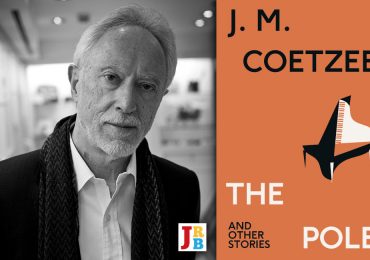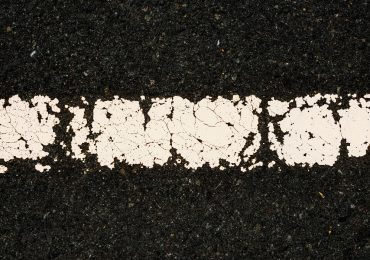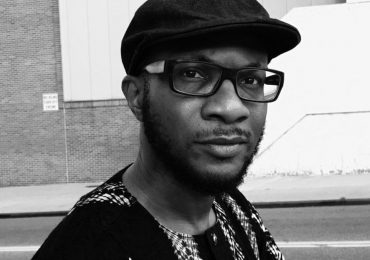This is an edited version of a letter The JRB received, from Christine Chiosi, in response to the essay by Wamuwi Mbao published in our February 2018 issue, ‘JM Coetzee is tired: Wamuwi Mbao reports from the ‘Photographs from Boyhood’ exhibition in Cape Town’.
To the Editor
In the February 5th edition of The Johannesburg Review of Books, Wamuwi Mbao describes an exhibition entitled, ‘Photographs from Boyhood’, a newly released collection of photographs taken by author JM Coetzee. Mbao’s report is an incisive one in which he takes liberty to write about the crowd gathered to hear Coetzee speak. Mbao writes:
… the people who are gathered here believe completely in their own mythology. They are content to believe because there is very little to trouble their view of the world. They are here to uncover the comforting narrative of their redemptive history. For them, Coetzee’s work is the absolution of their culpability. Because he is a product of this part of Cape Town, they believe that there is no real distance between their own attitudes and those espoused in Coetzee’s work. Being here is simply further proof of the essential goodness of their Southern Suburbs existence. From here, they will go on to the next literary thing, a festival perhaps, or a book launch, where the faces are white and the earnestness is unquestioned.
Unsurprisingly, Mbao’s words have produced a bit of discomfort and downright agitation in many who’ve read them—reactions I’ve discovered online. The article prompted a distinct memory for me: several years ago I attended a temporary installation at the Museum of Modern Art in New York City. In the center of the spacious mezzanine level, performance artist Marina Abramović sat expressionless at a wooden table as, one-by-one, museum-goers settled in across from her in silence.
Abramović’s art enjoys a long history of controversy fueled by her daring forays into performance territory, journeys that some label madness and others genius. Nudity, violence, sexuality—all of these themes are unapologetically laid bare for her viewers’ voyeuristic inspection.
I wrote about my reactions to the Abramović exhibit. At the time, it never occurred to me to write about the crowd in attendance, which was certainly composed of those of us who could afford the price of admission to the exhibit, and further, enjoyed the kind of privileged education necessary to know of Abramović’s works in the first place. I’m reasonably sure there were few persons who could claim poverty in the group. Furthermore, I didn’t see a single person who I could positively confirm had, or had not, suffered profound challenges, save one very feeble looking elderly woman who was wheelchaired to the front of the line.
Admittedly I’m not an art critic. Nevertheless, despite my lack of any certified authority to write intelligently and critically on art, I presumed I had the freedom to do so. Still, I am certain that even were I a recognised scholar in the field I would have had no particular authority to make elaborate claims about the crowd in attendance. What would certify me to evaluate the inner machinations of those viewers? The quality of their footwear? A few overheard clips of conversation? Their bodily postures, hairstyles?
I believe that Abramović’s performance raised questions about the relationships between subject, object, artist, and viewer—questions not likely often considered by the average museum attendee. Given her silence, given her intentional non-reactive stance, Abramović’s performance invited participants to more fully bring their own personal histories to bear on their interpretations of her as a subject of art. Simultaneously, individuals in the surrounding crowd would expand the subject to include the artist and the artist’s viewer.
Perhaps this is the lens through which one might interpret Mbao’s piece. However, although all of us in attendance became part of the performance piece itself, I doubt few could claim the clairvoyance necessary to know the personal histories, sociopolitical viewpoints, or future plans of those in the crowd. If there were some kind of collective mythology at work, a mythology of the kind that Mbao proffers was present at Coetzee’s photographic exhibit, I’m fairly certain that no one rightly claimed to know it.
I did not attend Coetzee’s exhibit, although like many of those who did attend I am a great fan of his writings. Would I have had the opportunity to meet him, to be within his orbit, I’m sure I would have experienced a mix of thrill and timidity—the kind of feeling not unfamiliar to many who find themselves in the presence of an artist whose works they greatly admire. I would hope that I might find the presence of mind to restrain myself enough to avoid the urge to ‘sit at his feet’, as Mbao suggested Coetzee’s admirers might like to do. But I make no promises therein. In short, I would have appeared outwardly much like those persons described by Mbao: a middle-aged, white, professor-type, enraptured by the occasion.
However, to label me ‘white’ would be to denigrate the complexity of my ethnicity (and that of my extended family). Even to pigeonhole me as ‘writer’ would be to ignore the unique trajectory of my professional life. And certainly to think of me as someone who was never on the receiving end of violence, oppression, injustice, or ethnic discrimination would be to annihilate my personal history altogether. These things would be easy to do—I do not wear evidence of my interiority or personal history. Neither do I share it with strangers at art exhibitions.
How do we as writers or viewers arrive at truthful representations of experience? ‘Truth is something that comes in the process of writing, or comes from the process of writing,’ Coetzee said during an interview with Professor David Attwell. Further, while discussing the issue of dialogue in storytelling and in life, Coetzee said, ‘I believe most exchanges between human beings to be exchanges between projected fictions’. Later, he builds upon the idea of fiction in self-story, saying that since no objective ideal observer exists who knows his true story, he must settle for a kind of life narration that takes into account the narrative input of ‘well-placed’ observers (i.e. his parents, his spouse, his children). He admits that his self-story is a negotiation of sorts. The story he puts forth may not even be true, but because he has no better alternative, because it is his, he gives this negotiated version of self-story his allegiance.
This notion that our self-stories can be regarded as works of fiction is an assertion that leaves me rather troubled. Coetzee’s keen manipulation of narrative structure and his use of metafiction, along with his dialogue on fiction and psychotherapy and his many essays on writing, all serve to remind us of his suggestion that our ‘real’ stories are ripe with fictions. As authors of our own individual stories about our singular lives we continually co-opt, reconfigure, redact, and colonise the stories of others. Our pens (or our minds, which continually compose and recompose our unwritten stories) can wield a great deal of what appears to be violence in the process.
The grand sweep of characterisation that Mr Mbao uses to describe the photography exhibit and, more importantly, its attendees becomes an excellent testimony to Coetzee’s assertions. Our stories of others and our self-stories certainly shape our understandings about how our worlds function, ultimately shaping our lives, and vice-versa. The act of characterising others may be unavoidable, but it can also become highly reductive. Adding another valence of complexity is the notion, alluded to by Sontag and others, that the particular direction in which we choose to focus our lens greatly determines how we ultimately construct our narratives of experience.
What might be gleaned from the discomfort that Mbao’s essay has caused for some of Coetzee’s fans (and most likely the organisers of the photographic exhibition)? All stories risk estrangement. Nevertheless, all of us must create a self-story in order to experience a life that feels continuous, that makes sense. And that story also entails writing the stories of the other characters in our lives, even the ‘lesser’ characters, or, more aptly put, the ‘strangers’. I read Mbao’s essay like a long poem about otherness, about estrangement, and about the distance that can easily be built between us as humans as we try, pitifully, to construct a life that simply makes sense. In my better moments I’m not so inclined to criticise Mbao’s attempt to do so. Rather, his piece serves as a reminder to me to pay close attention to how colonising, co-opting, or reducing the stories of others might become an act of brutality in and of itself, regardless of our intentions.
Sincerely
Christine Chiosi, MD MFA DMH






One thought on “Letter: Christine Chiosi on the ‘discomfort’ and ‘estrangement’ of Wamuwi Mbao’s report from an exhibition of JM Coetzee’s boyhood photographs”